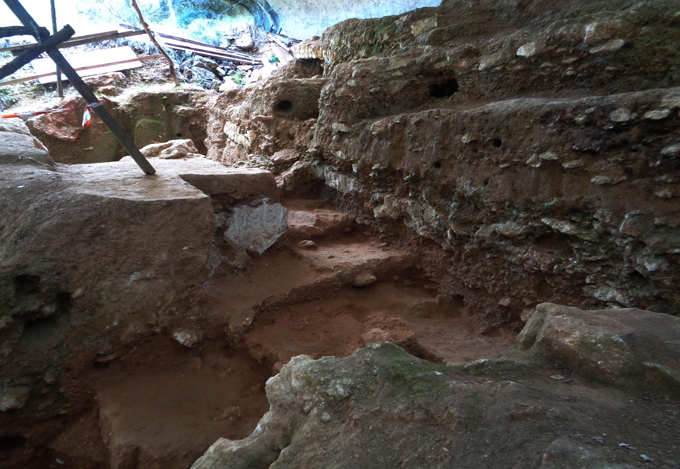This is the oldest known string. It was made by a Neandertal
In a rock shelter in France, What may be the world’s oldest piece of string, made by Neanderthal humans from bark about 50,000 years ago has been found
Just over two-tenths of an inch long, It’s a tiny fragment — but its discoverers say it shows Neanderthals had extensive knowledge of the trees it was made from, and enough practical ability to make a string that would hold fast under tension.
This research was first reported in the live science reports on Thursday. It is the first time that a string or rope was identified to the Neanderthals – which indicates that they have been using other ancient technologies that have since rotted away, from basketry to clothing to fishing gear.
It also suggests that Neanderthals – the archetypal crude cavemen – were smarter than some people give them credit for.
“This is just another piece of the puzzle that shows they really weren’t very different from us,” said palaeoanthropologist Bruce Hardy of Kenyon College in Gambier, Ohio, who was part of the team that discovered the string.

Hardy spotted the string fragment attached to a small stone tool found at the Abri du Maras rock shelter in southeastern France, which was occupied by Neanderthals – Homo sapiens neanderthalensis – until about 40,000 years ago.
Before this, what’s thought to be the oldest string was found in Israel, and made by early modern humans – Homo sapiens– about 19,000 years ago. The tool from France was a sharp-edged flint used for cutting, and the string could have tied it to a handle, Hardy said.
Only the fragment of the string was left – but enough to be looked at with an electron microscope: “This is the oldest direct evidence of string that we have,” he said.
Twisted bark fibers have been found before, but they weren’t enough to show conclusively that Neanderthals used string. But the latest fibers were first twisted counterclockwise into single strands, and three strands were then twisted clockwise to form a string that wouldn’t unravel.
“This is the first time we found a piece with multiple fibers and two layers of twistings that tells us we have a string,” Hardy said.
The fibers are thought to come from the inner bark of a conifer tree, which implies the string’s makers had detailed knowledge of trees. “You can’t just get any old tree and get fiber from it, nor can you take the right kind of tree and get it at any time of year,” he said.
The three-ply structure also suggests the Neanderthals who made it had basic numeracy skills.
“They are showing knowledge of pairs and sets of numbers,” Hardy said. “You have to understand these elements in order to create the structure – without that, you wouldn’t get a cord.”
The discovery of the string fragment hints at a range of objects used by Neanderthals, such as wooden items, animal skins, fabrics, and ropes.

Hardy hopes analysis of other Neanderthal finds will reveal fragments of more perishable technologies, such as basketry and weaving. Not all scientists are convinced that the latest find shows conclusively that Neanderthals made string, however.
Andrew Sorensen, a Paleolithic archaeologist at Leiden University in the Netherlands, notes the fragment is extremely fine – about as thick as five sheets of paper – and may have been too thin to be useful.
Instead, the twisted bark fibers could result from rubbing them together to make tinder for a fire, or from scraping bark off the stone tool, he said.
“I’m a fan of Neanderthals being quite intelligent and being able to do a lot of kinds of things that [early modern humans] do,” he said. “I just don’t know if this is a home-run demonstrating this activity.”





